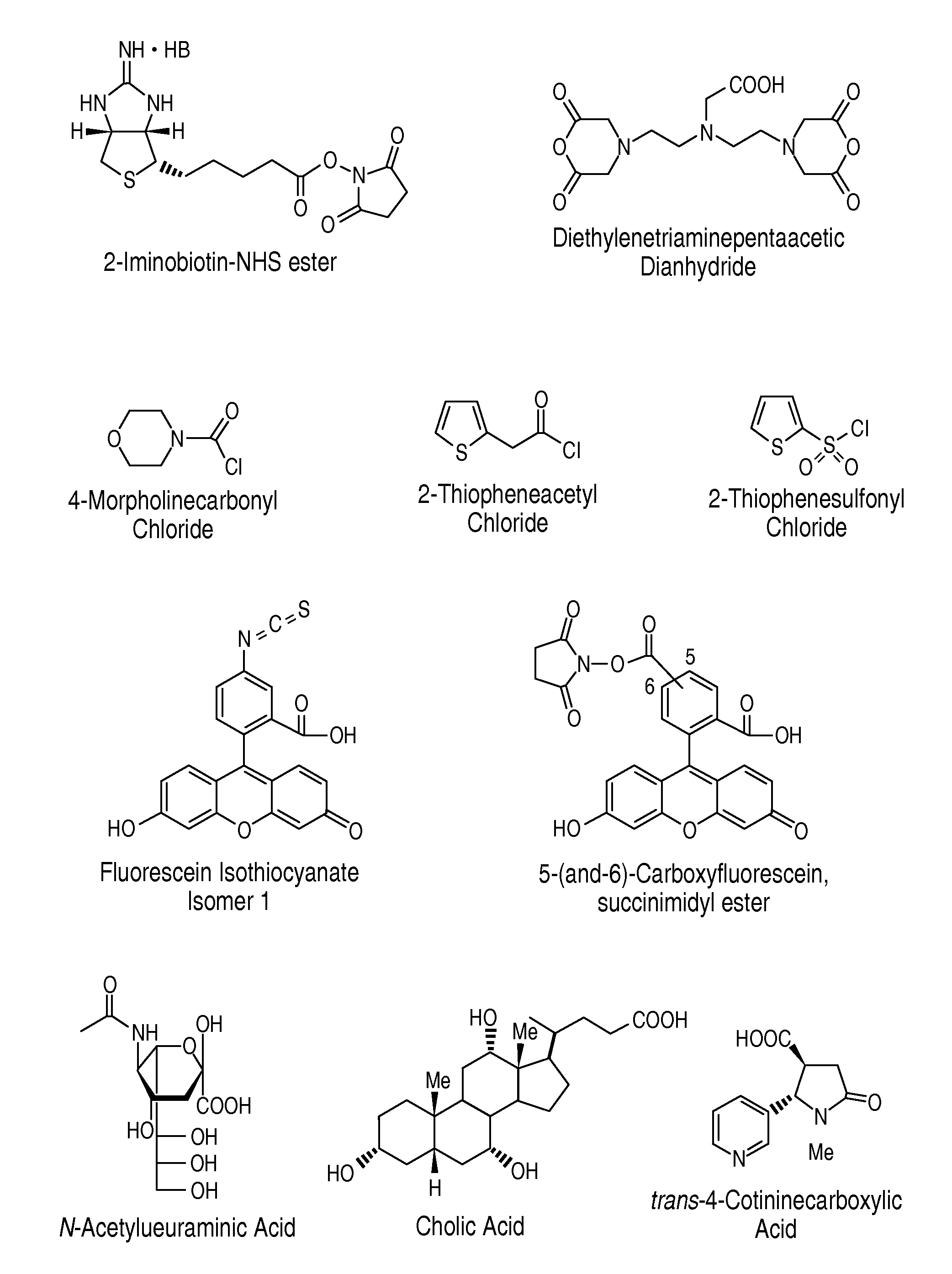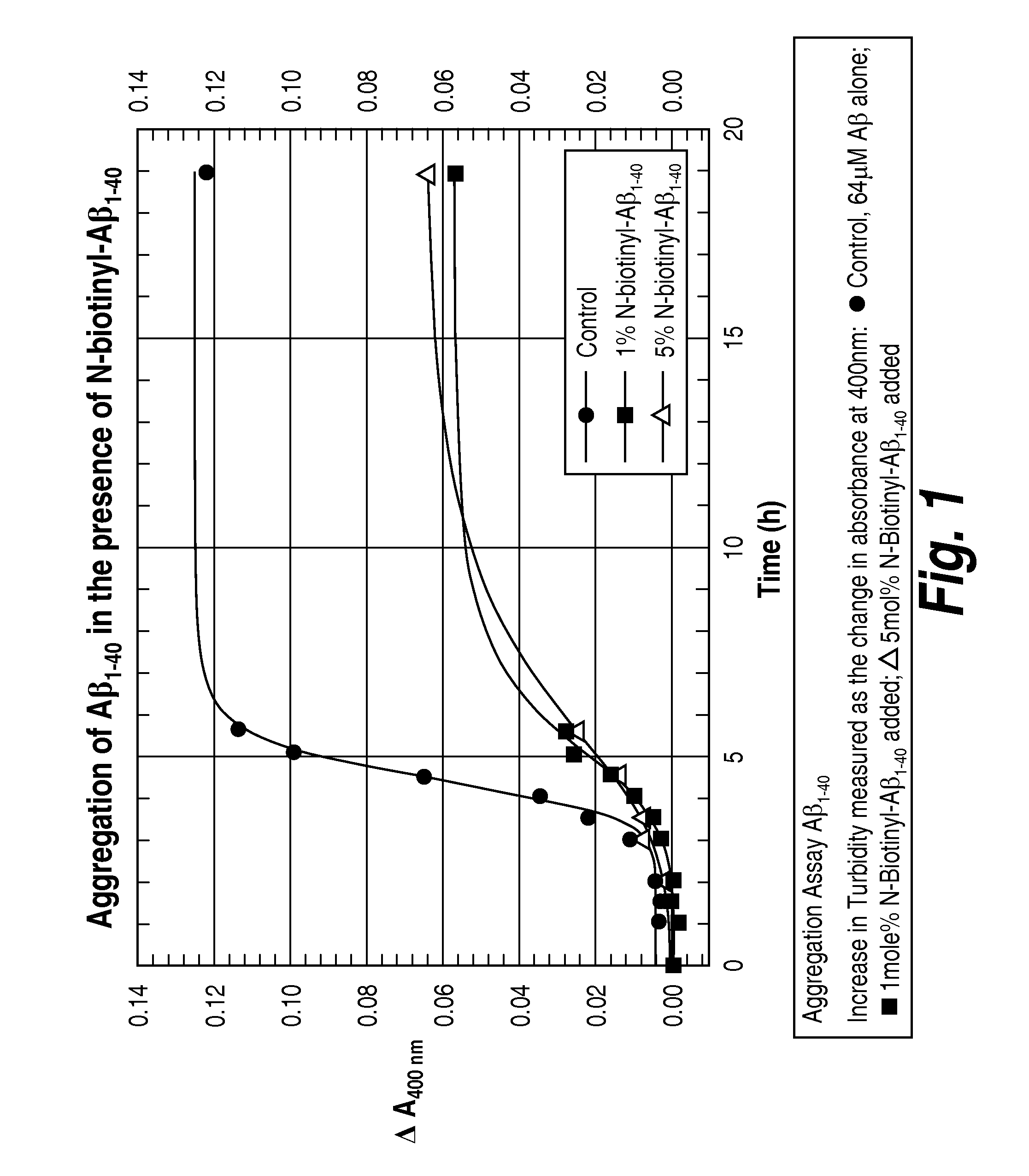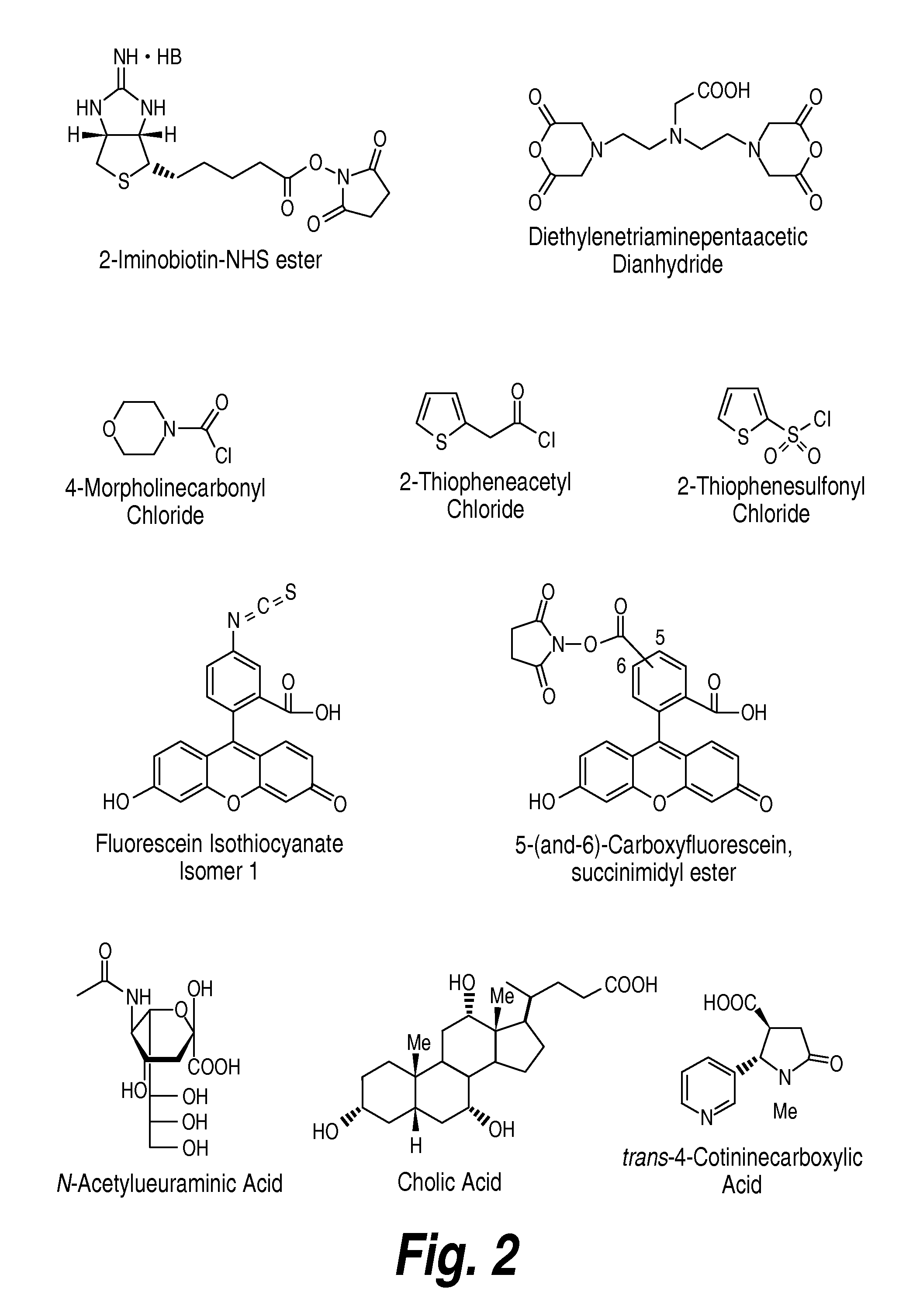Modulators of amyloid aggregation
a technology of amyloid aggregation and modulators, which is applied in the direction of drug compositions, peptide sources, peptide/protein ingredients, etc., can solve the problems of no treatment that significantly retards the progression of the disease, the societal cost of managing ad is upwards of 80 billion dollars annually, and the control and treatment of ad will become a health care problem even more significant, so as to facilitate the diagnosis of a -amyloidogenic diseas
- Summary
- Abstract
- Description
- Claims
- Application Information
AI Technical Summary
Benefits of technology
Problems solved by technology
Method used
Image
Examples
example 1
Construction of β-Amyloid Modulators
[0246]A β-amyloid modulator composed of an amino-terminally biotinylated β-amyloid peptide of the amino acid sequence:
DAEFRHDSGYEVHHQKLVFFAEDVGSNKGAIIGLMVGGVV
(positions 1 to 40 of SEQ ID NO: 1) was prepared by solid-phase peptide synthesis using an Nα-9-fluorenylmethyloxycarbonyl (FMOC)-based protection strategy as follows. Starting with 2.5 mmoles of FMOC-Val-Wang resin, sequential additions of each amino acid were performed using a four-fold excess of protected amino acids, 1-hydroxybenzotriazole (HOBt) and diisopropyl carbodiimide (DIC). Recouplings were performed when necessary as determined by ninhydrin testing of the resin after coupling. Each synthesis cycle was minimally described by a three minute deprotection (25% piperidine / N-methyl-pyrrolidone (NMP)), a 15 minute deprotection, five one minute NMP washes, a 60 minute coupling cycle, five NMP washes and a ninhydrin test. To a 700 mg portion of the fully assembled peptide-resin, biotin (o...
example 2
Inhibition of β-Amyloid Aggregation by Modulators
[0249]The ability of β-amyloid modulators to inhibit the aggregation of natural β-AP when combined with the natural β-AP was examined in a series of aggregation assays. Natural (3-AP (β-AP1-40) was obtained commercially from Bachem (Torrance, Calif.) Amino-terminally biotinylated β-AP modulators were prepared as described in Example 1.
[0250]In one assay, β-AP aggregation was measured by determining the increase in turbidity of a solution of natural β-AP over time in the absence or presence of various concentrations of the modulator. Turbidity of the solution was quantitated by determining the optical density at 400 nm (A400 nm) of the solution over time.
[0251]The aggregation of natural β-AP in the absence of modulator was determined as follows. β-AP1-40 was dissolved in hexafluoro isopropanol (HFIP; Aldrich Chemical Co., Inc.) at 2 mg / ml. Aliquots of the HFIP solution (87 μl) were transferred to individual 10 m...
example 3
Neurotoxicity Analysis of β-Amyloid Modulators
[0258]The neurotoxicity of the β-amyloid modulators is tested in a cell-based assay using the neuronal precursor cell line PC-12, or primary neuronal cells, and the viability indicator 3,(4,4-dimethylthiazol-2-yl)2,5-diphenyl-tetrazolium bromide (MTT). (See Shearman, M. S. et al. (1994) Proc. Natl. Acad. Sci. USA 91:1470-1474; Hansen, M. B. et al. (1989) J. Immun. Methods 119:203-210). PC-12 is a rat adrenal pheochromocytoma cell line and is available from the American Type Culture Collection, Rockville, Md. (ATCC CRL 1721). MTT (commercially available from Sigma Chemical Co.) is a chromogenic substrate that is converted from yellow to blue in viable cells, which can be detected spectrophotometrically.
[0259]To test the neurotoxicity of a β-amyloid modulator (either alone or combined with natural β-AP), cells first are plated in 96-well plates at 7,000-10,000 cells / well and allowed to adhere by overnight culture at 37° C. Serial dilutions...
PUM
| Property | Measurement | Unit |
|---|---|---|
| structure | aaaaa | aaaaa |
| length | aaaaa | aaaaa |
| aggregation | aaaaa | aaaaa |
Abstract
Description
Claims
Application Information
 Login to View More
Login to View More - R&D
- Intellectual Property
- Life Sciences
- Materials
- Tech Scout
- Unparalleled Data Quality
- Higher Quality Content
- 60% Fewer Hallucinations
Browse by: Latest US Patents, China's latest patents, Technical Efficacy Thesaurus, Application Domain, Technology Topic, Popular Technical Reports.
© 2025 PatSnap. All rights reserved.Legal|Privacy policy|Modern Slavery Act Transparency Statement|Sitemap|About US| Contact US: help@patsnap.com



